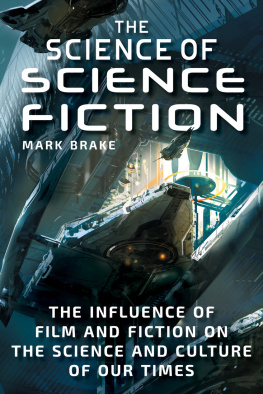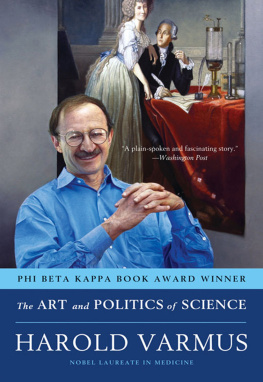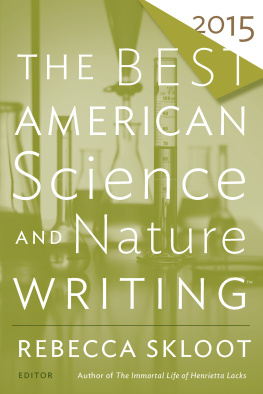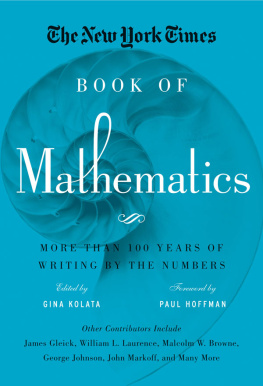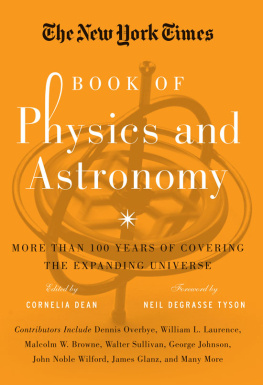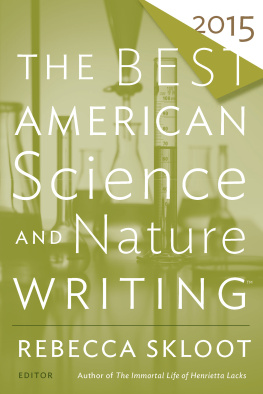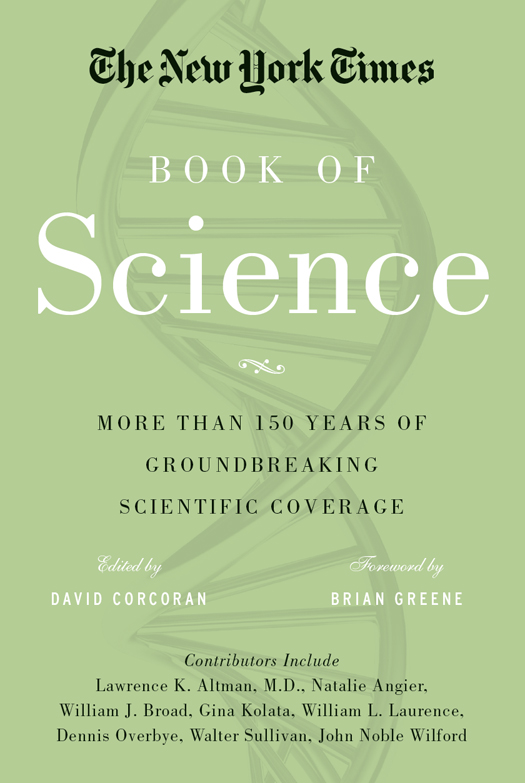FOREWORD
Some forty years ago, during a long subway ride to a junior high school math-team competition (the geek version of an away game), our coach pierced the din of rattling metal wheels to ask a handful of us why we loved mathematics. Even in the most conducive of circumstances, mathletes are not the most introspective bunch. While wed jump all over a challenge like finding triangular numbers that are also perfect squares, or calculating the probability that two people in the subway car shared the same birthday, articulating a personal reflection on, well, anything, generated a more reserved response. We let the thunderous clatter of the express train fill the silence. No one said a word.
But it did get me thinking. Why did I love math? The thrilling moment when the solution to a problem snaps into focus, the beauty of constructing an elegant proof, the power of understanding a hidden patternall of these surely resonated with my budding seventh-grade mathematical mind. Still, I remember thinking that the most compelling answer was simply this: math works. A well-posed problem has a definite answer. Regardless of the approach you take, the calculative scheme you invoke, the oblique angle you follow, barring any mistakes you will get the answer. The answer. The rock-bottom certainty of problem solving was, for me, a welcome anchor in a post-1960s world that seemed awash in uncertainty.
Yet, it is that very certainty in a rolling sea of uncertainty that makes the science writers job so challenging.
When mathematics is applied as a scientific tool to explore the real worldnot to solve artificial problems encountered on exams or competitionsprecision is possible only because researchers encircle themselves with thick walls of assumptions that keep undue complexity at bay. When we calculate the orbital motion of the earth, we assume the earth is a solid ball moving solely under the influence of the suns gravity. When we want to get closer to truth, we take account of the influence of the moon and other planets, and even the earths complex internal structure. Its a mode of operation recapitulated across the sciences: progress takes place in the ever-shifting overlap between simplification and relevance. Science is the art of knowing what to ignore.
The science writer thus has to continually strike a delicate balance between the precision of scientific resultscertaintyand the morass of qualifications upon which such results restuncertainty. As a scientist who also writes, Ive experienced this from both sides. In countless interviews with science journalists, Ive repeated Yes, but emphasizing one crucial caveat necessary to make my description of a scientific advance accurate but rendering the responsible journalists story murky. In my own writing, Ive countlessly wrestled with finding descriptions that capture the excitement of scientific advances while remaining faithful to the precise and ever-present limits that accompany each advance.
In essence, we scientists are just as protective of what we know as we are of what we dont. Our ignorance is a precious commodity. It not only defines the boundary of understanding but provides the terra incognita that beckons exploration and, on rare occasion, plays host to a remarkable new insight.
Scientists and science writers have not always done a great job of communicating this to the public. Breathless articles are surely exciting but over time they suggest that science is unstable, buffeted this way and that by a steady stream of revolutions that, one would naturally think, continually rewrite the textbooks. But the fact is that science is remarkably stable. New insights typically dont obliterate existing understanding but, instead, extend its reach a few additional steps into the realms of darkness. This is an essential quality of the whole scientific enterprise that I find is often misunderstood.
In fact, the continuity of science plays an even more vital role, something that can be difficult for a reader to tease out of even the best journalism. One of the greatest scientific achievements of the twentieth century was Albert Einsteins completion, in 1915, of the General Theory of Relativity, a new and more powerful approach to understanding the force of gravity. In 1919, Einsteins theory was confirmed through astronomical observations of distant stars during a solar eclipse. The story was widely covered, with two New York Times articles (both reprinted in this volume) being those Ive most often seen referenced. Understandably, the articles give only modest attention to Einsteins radically new view of gravity, framed in terms of warps and curves in space and timeit often takes years of hindsight, even for scientists, to find the right language for communicating the most abstract of ideas to those without technical training. And, correctly, the articles emphasize that in the everyday manifestations of gravity we all experience, from the arc of a tossed ball to the trajectory of a dropped cup, Einsteins and Newtons theories hardly differ in their predictions.
But what the reader is unlikely to discern from the articles is that however revolutionary Einsteins discovery, Newtons approach to gravity was one of the essential guiding lights leading Einstein to his theory of relativity. Between 1912 and 1915, as he groped his way through a terrain of complex mathematics, Einstein diligently required that any new equation he developed be reduced to Newtonian gravity when applied to ordinary situations, like the motion of the moon, where Newtons ideas had already proved impressively accurate. Indeed, in applying this very requirement in 1913, Einstein committed a technical error that set back the discovery of General Relativity two years. And so, far from throwing Newtonian gravity overboard, Einstein tightly grasped the Newtonian lifeline and rode it to an unfamiliar but spectacularly beautiful shore.
The point is that there is uncertainty at the frontier of knowledgewhich is what makes science excitingbut there is a core of scientific insight that you can count on. Einsteins discovery of the General Theory of Relativity does not mean your effort in high-school physics to understand Newtonian gravity was a waste of time. Unlike that ultra skinny tie in your closet, deep scientific understanding doesnt go out of fashion.



